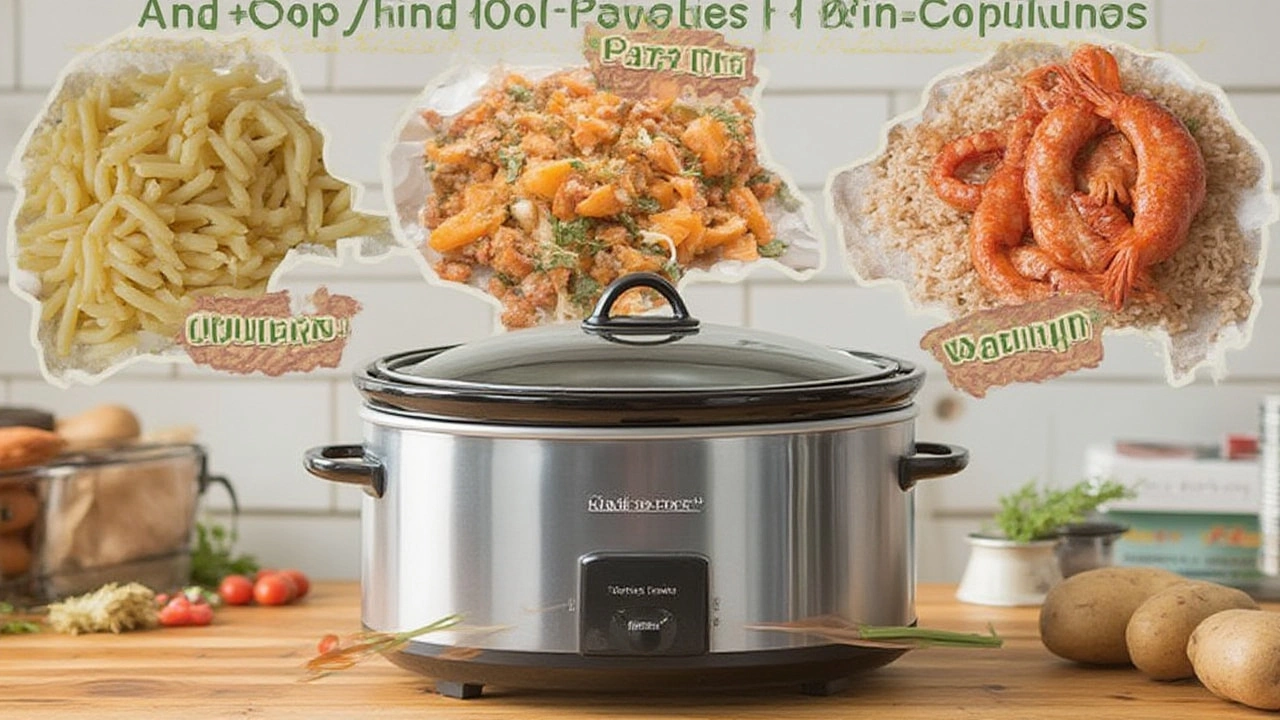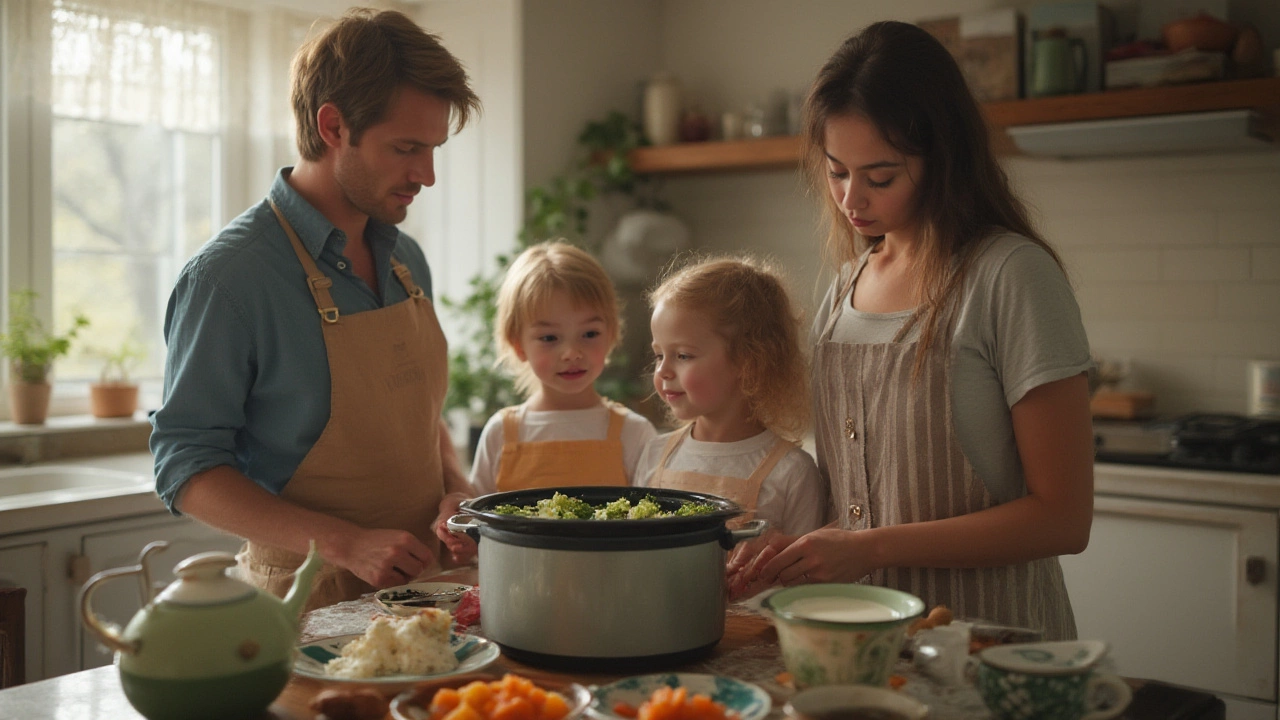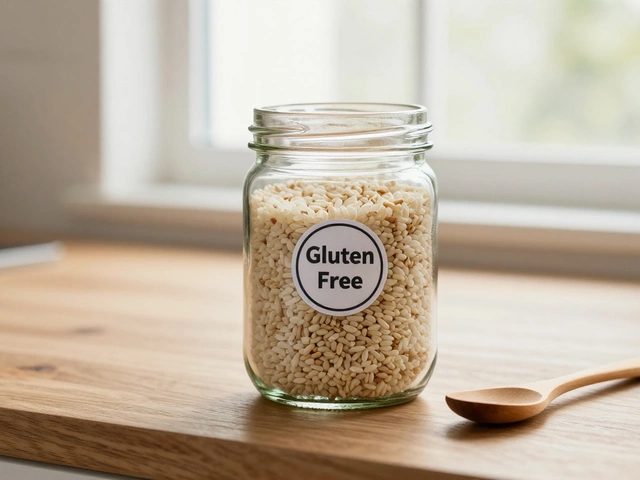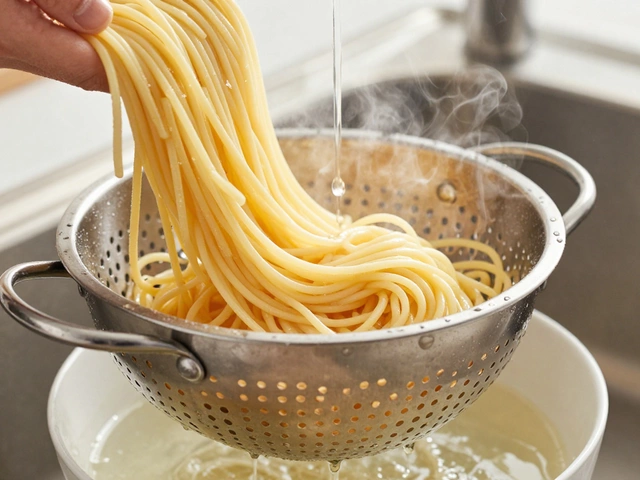Ever tossed something in your slow cooker, confident dinner would cook itself, then opened the lid later to find a soupy, stringy mess? Slow cookers—those countertop heroes—seem like they can handle almost anything. But some foods turn into disasters inside a crockpot. The magic of low-and-slow does have limits, and if you want flavor, texture, and food safety on your side, it pays to know what never belongs inside that ceramic insert.
The Science Behind Slow Cooking: How It Works and Its Boundaries
Slow cookers work their charm by heating food gently at low temperatures, usually between 170°F and 280°F. This makes them perfect for breaking down tough cuts of meat and bringing out deep flavors in soups and stews. But this method’s strength is also its weakness. The lower temperatures and gentle moisture means that some foods simply don’t play nice. For instance, if you want crispy bacon or a golden pie crust, that lid traps steam and keeps everything soft and soggy.
The thermostat in most slow cookers never reaches a true boil, and there’s almost no evaporation. That’s perfect for shredded pork or beef stew but terrible if you want to caramelize onions or roast veggies for that crispy edge. According to the U.S. Department of Agriculture (USDA), food should hit 140°F within two hours to avoid a food safety risk; most slow cookers are designed with this in mind, but only for foods with enough moisture. Dry grains like rice or pasta, or delicate proteins like fish, don’t hit their best stride in this environment. The texture goes out the window, and sometimes, so does safety.
Now, chemistry plays a huge role. Take beans—dried kidney beans, to be exact. Cooking them on low heat actually keeps toxins like phytohemagglutinin intact, which can make you sick. To make beans safe, you must boil them first, something a slow cooker doesn’t always do. Also, if you’re hoping to microwave reheat certain dishes for that bubbling, hot finish, a slow cooker won’t get there without holding the food way too long—and quality tanks.
Foods That Flop in a Slow Cooker
Let’s talk specifics. Some foods just don’t survive the crockpot journey, and here’s why. Seafood tops the list; shrimp, scallops, and most fish turn rubbery and dry. They cook fast as it is, so hours on low heat guarantees a chewy disappointment. Pasta falls apart and turns mushy, even if you add it near the end. Rice, especially white rice, can become a gluey block. Sure, some recipes say to use instant rice, but even then the texture’s rarely right.
Leafy greens like spinach and kale shrivel down to nothing and lose their freshness after hours in the cooker. Dairy is another big problem. Adding milk, cream, or soft cheese early on causes them to separate or curdle. If you need a creamy soup or dip, add those at the end of cooking. Cruciferous veggies—like broccoli, cabbage, and Brussels sprouts—give off sulfur compounds over long cook times, filling your kitchen with an, uh, “distinctive” aroma that’s not so appetizing. And hard-boiled eggs? Don’t even think about it—eggs develop a sulfur taste and chalky texture.
Let’s not forget delicate herbs. Basil, chives, and parsley lose their punch with hours of exposure to heat. Save those for the final garnish. As for foods that need real, high heat—think fried chicken, crispy potatoes, or a caramelized topping on a dessert—your slow cooker just can’t do it. The moist heat prevents browning, and food comes out steamed, not roasted or fried.
| Food | Why Slow Cookers Fail |
|---|---|
| Fish/Shrimp | Overcooked, rubbery texture |
| Pasta/Rice | Mushy, overcooked, loses structure |
| Leafy Greens | Turn mushy, dull flavor |
| Dairy (Milk, Cream, Soft Cheese) | Separates, curdles |
| Eggs | Rubbery, sulfurous flavor |
| Delicate Herbs | Flavor evaporates, browns too quickly |
| Baked Goods | Never browns, always soggy |
| Bone-in Skin-on Chicken | Skin remains rubbery, not crisp |
| Foods Needing High Heat | No caramelization, poor flavor |

Safe Bets and Smart Substitutions: Making Your Slow Cooker Shine
While some foods flop, others thrive in a slow cooker. It’s perfect for tough cuts like brisket, pork shoulder, or short ribs—these break down into tender, juicy bites. Root veggies (think carrots, potatoes, sweet potatoes) hold their structure and soak up flavor. Lentils and beans (pre-boiled, for safety!) are right at home, and large-batch soups or chilis bloom with extra hours. Tomatoes are surprisingly slow cooker-friendly; in fact, they taste better after the natural sugars have mellowed over a few hours.
Want pasta in your slow cooker meal? Boil it separately and stir it in during the last minutes. Same goes for rice. Craving creamy texture? Use evaporated milk or add regular milk at the very end to avoid curdling. To keep leafy greens bright, stir them in for just the final 10 minutes. There’s a trick for almost every slow cooker mishap if you plan ahead.
Here’s a little-known fact: some appliances labeled “slow cooker” have a sauté setting—that’s your best friend for browning meat or onions before switching to slow mode. It’s the kind of step that builds flavor layers restaurants talk about. Want crispy chicken? Slow cook, then finish under the broiler for a few minutes. For herbs, try dried versions during cooking and fresh at the end for a punch of flavor. And if you want to avoid that sulfurous veggie dilemma, stick to par-cooked or roasted brassicas; stir them in when the dish is done.
- Boil beans rapidly for 10 minutes before slow cooking (especially red kidney beans).
- Add dairy for the last 30 minutes—never sooner—to prevent a curdled mess.
- For grains, precook and add at the finish for the best texture.
- Always check meat temperature with a thermometer, especially chicken and pork, to guarantee food safety.
- If you want browning, finish dishes in the oven or on the stove for a few minutes.
Creative Uses That Don’t Break the Rules
Your slow cooker doesn’t have to spend its life cranking out beef stew. People use slow cookers for hot drinks like mulled wine, creamy dips (add the cheese at the end!), oatmeal that’s ready for morning, and even making jams or applesauce. Keeping the temperature low and moisture high means you can make savory or sweet spreads without slaving over the stove. Slow cookers are also fantastic for meal prep. You can batch-cook shredded chicken for tacos, pulled pork, or Sunday chili that’ll last the week.
It’s handy for party food, too. Meatballs, cheese dip, or even baked potatoes can hang out all day, warm and ready. Still, knowing what doesn’t work saves you from disappointment and waste. If you daydream about crispy fried chicken or artisan bread with a chewy crust, sorry—crockpots weren’t built for that. But if you want a hands-off pot roast or velvety beans, you’re in the right place.
Here’s a tip: get to know your specific slow cooker. Each brand and model heats a little differently. Some run hotter, especially new digital models. Test yours with water to see how hot it gets after two hours on high and low. This helps you adapt recipes so nothing turns gummy or overcooked.
And if you’re keen on dessert? Cheesecake, bread puddings, or lava cakes (yes, really) can be made in a slow cooker—just line the insert with parchment, use the water bath method, and keep a close eye. If you love hands-off cooking and can work with its limits, this trusty tool is a kitchen MVP.
The bottom line is, even though the *slow cooker* can't do everything, it still takes a ton of pressure off dinner prep. Know its weak spots, plan smart, and you'll keep reaping its comforting, time-saving rewards—disasters avoided.





